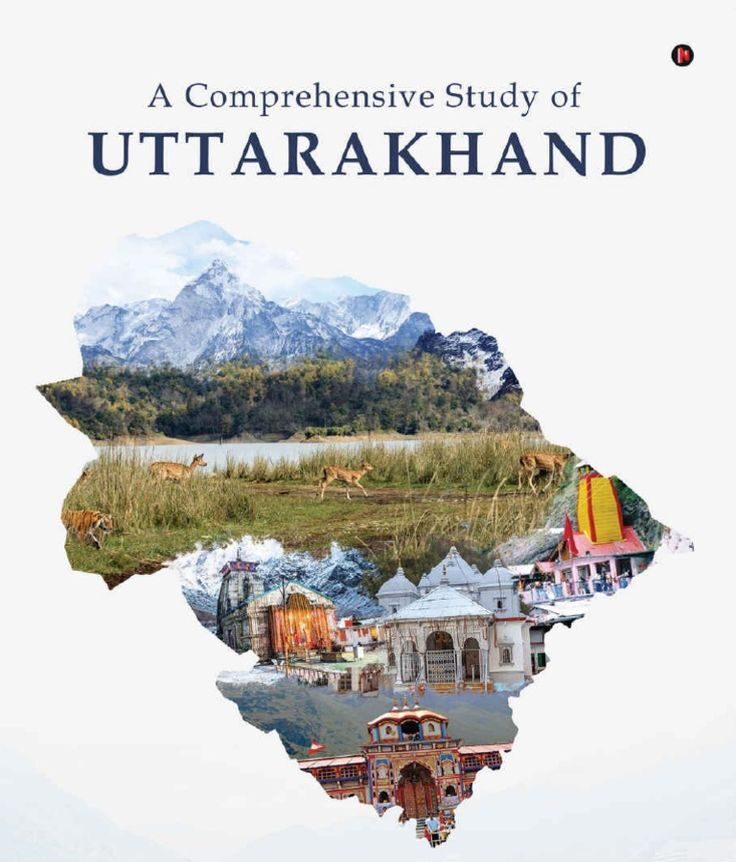Uttarakhand: 7 Essential Insights into Its Rich Heritage and Societal Impact
Introduction
Uttarakhand, often referred to as Devbhumi (Land of Gods), is one of the most spiritually significant and naturally breathtaking states in India. Nestled in the northern part of India, this state is renowned for its pristine mountain landscapes, sacred temples, and serene environment. From the Himalayas to its rich cultural traditions, Uttarakhand plays an essential role in the spiritual and socio-economic landscape of the country. In this article, we explore Uttarakhand’s history, daily life, cultural significance, and its importance to Indian society.
History
It’s history is deeply intertwined with ancient Indian culture, religion, and tradition. The state has witnessed the rise and fall of dynasties, the advent of significant religious movements, and has been a source of inspiration for numerous spiritual leaders.
- Ancient Origins: The region that is now Uttarakhand has been inhabited for thousands of years. It is believed that it was part of the ancient Kuru Kingdom and later the Maurya and Gupta empires. The rich mythology surrounding Uttarakhand’s mountains, rivers, and temples has shaped its cultural identity.
- Religious Significance: Known as Devbhumi, Uttarakhand holds great religious importance. The Char Dham Yatra, which includes the sacred shrines of Yamunotri, Gangotri, Kedarnath, and Badrinath, attracts millions of devotees every year. These sites are not only pilgrimages but also historical monuments steeped in mythology.
- Post-Independence: It was a part of the state of Uttar Pradesh until 2000, when it was carved out as a separate state. Its formation was driven by the need for a region that could focus more on its local cultural heritage, environmental preservation, and religious tourism.
Daily Life
It’s lifestyle is influenced by its geography, spiritual significance, and agricultural base. The state has a rich cultural heritage that reflects its rural traditions, hospitality, and eco-conscious mindset.
- Agriculture: Much of Uttarakhand’s population lives in rural areas, where agriculture plays a key role in daily life. Rice, wheat, maize, and potatoes are staple crops, while the state is also known for its extensive tea plantations and fruits, including apples and plums.
- Mountain Life: Life in the mountain villages of Uttarakhand is simple and deeply connected to nature. The people of Uttarakhand, known as Paharis, have learned to adapt to the challenging mountain environment. Traditional practices like beekeeping, herding, and wood carving are commonly observed.
- Spirituality and Festivals: Spiritual life is central to daily living in Uttarakhand. Hinduism, Buddhism, and Sikhism influence the spiritual beliefs and customs in the region. Festivals like Makar Sankranti, Diwali, Baisakhi, and the Kumbh Mela are celebrated with zeal, especially in Haridwar, which serves as one of the most significant religious cities in India.
- Modernization: While Uttarakhand remains steeped in tradition, it has seen rapid urbanization in cities like Dehradun and Nainital, where commerce, education, and technology are thriving. Tourism is one of the state’s main economic drivers, with visitors flocking to the state’s natural beauty and sacred sites.
Key Facts
- Capital: The capital city of Uttarakhand is Dehradun, known for its scenic beauty and as an educational hub with prestigious institutions like Forest Research Institute and Indian Military Academy.
- Famous Tourist Destinations: It is home to a multitude of breathtaking destinations. The Nainital Lake, Jim Corbett National Park, and the Valley of Flowers National Park are some of the state’s iconic attractions.
- Religious Importance: The Char Dham Yatra attracts millions of pilgrims every year. The state is also home to important Hindu temples such as Kedarnath and Badrinath, two of the twelve Jyotirlingas and Chardham pilgrimage.
- Climate: It has a diverse climate, ranging from a temperate climate in the hills to subtropical conditions in the foothills. The Himalayan range significantly influences its weather patterns.
- Wildlife: It is rich in biodiversity, with several national parks and wildlife sanctuaries like Jim Corbett National Park and Rajaji National Park. These parks serve as protected areas for tigers, elephants, and other species.
- Population: As of the latest census, It has a population of about 10 million people. The state is predominantly rural, with agriculture being the major occupation.
- Languages: The official language is Hindi, but Garhwali and Kumaoni are widely spoken in the hill regions.
Observance and Celebrations
The people of Uttarakhand celebrate various festivals throughout the year, reflecting the state’s rich spiritual and cultural heritage.
- Char Dham Yatra: This is one of the most important religious observances, with millions of pilgrims making the journey to the four sacred shrines of Kedarnath, Badrinath, Yamunotri, and Gangotri.
- Makar Sankranti: This festival marks the transition of the sun into Capricorn. People celebrate by flying kites, taking holy dips in rivers, and enjoying tilkut (a sweet made of sesame and jaggery).
- Harela Festival: This festival is dedicated to nature and is celebrated by the locals to honor the environment. It involves planting trees and performing rituals to ensure prosperity and harmony with nature.
- Baisakhi: A harvest festival that holds religious and cultural significance for the people of Uttarakhand. It marks the beginning of the new agricultural season and is celebrated with folk music, dances, and fairs.
- Kumbh Mela: Held every 12 years in Haridwar, the Kumbh Mela is one of the world’s largest religious gatherings. People from across India and abroad visit to take a holy dip in the Ganges and attain spiritual purification.
Significance in Society
It holds a unique place in Indian society for its religious, environmental, and cultural significance.
- Religious Importance: As the abode of Hindu gods, Uttarakhand is a major pilgrimage destination. The state has contributed to India’s spiritual landscape by hosting some of the most revered temples and religious festivals.
- Environmental Conservation: Uttarakhand’s forests, rivers, and mountains are vital for ecological balance. The state is home to the Himalayan ecosystem, which is rich in flora and fauna. Conservation efforts have helped preserve its natural beauty and biodiversity.
- Economic Impact: Tourism is one of Uttarakhand’s largest revenue sources, and the state is also known for its thriving agriculture and horticulture industries. The state plays a crucial role in producing fruits, herbs, and flowers that are distributed across India.
- Cultural Heritage: The traditional music, dance forms like Rasia, Chholiya, and Pandav Lila, and craftsmanship in weaving and wood carving are integral parts of Uttarakhand’s cultural identity.
Wishing
On the occasion of the state’s foundation day, and to honor its rich history, heritage, and contributions to the nation, we wish Uttarakhand prosperity and growth. May its people continue to thrive, and may its spiritual legacy guide future generations to foster peace, harmony, and respect for nature.
FAQs
- What is the capital of Uttarakhand? The capital of Uttarakhand is Dehradun.
- What are the major tourist attractions in Uttarakhand? The state boasts of scenic spots like Nainital, Rishikesh, Haridwar, Jim Corbett National Park, and the Char Dham temples.
- Why is Uttarakhand called Devbhumi? The state is known as Devbhumi due to its association with numerous sacred temples and religious sites.
- What are the main languages spoken in Uttarakhand? Hindi, along with regional languages such as Garhwali and Kumaoni, are spoken widely.
- What is the best time to visit Uttarakhand? The best time to visit Uttarakhand is from March to June and September to November, especially for trekking and pilgrimage.
Uttarakhand stands as a vibrant reflection of India’s spirituality, natural beauty, and cultural richness. As the state continues to evolve, balancing modernity with tradition, it remains a beacon of hope, inspiration, and progress for its people and the nation.










